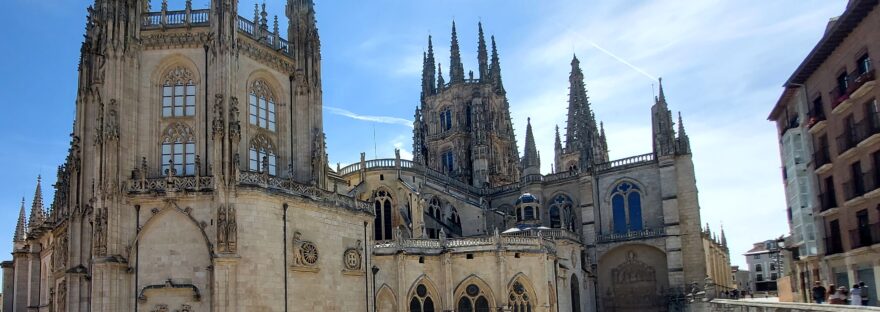We left Madrid just before dawn to catch the bus that would take us to visit what was once the capital city of the Castilian-Leonese Kingdom, one of the most modern and elegant cities of its time, Burgos.
Once we arrived at the bus station, it only took us five minutes to cross the bridge and go through the Arch of Santa Maria to get to the Plaza Rey San Fernando. Arriving there, we were completely amazed to see in front of us and in all its splendor, the “Santa Iglesia Catedral Basílica Metropolitana de Santa María” (Holy Church Cathedral Metropolitan Basilica of Holy Mary), more commonly known as the Cathedral of “Santa María de Burgos”.
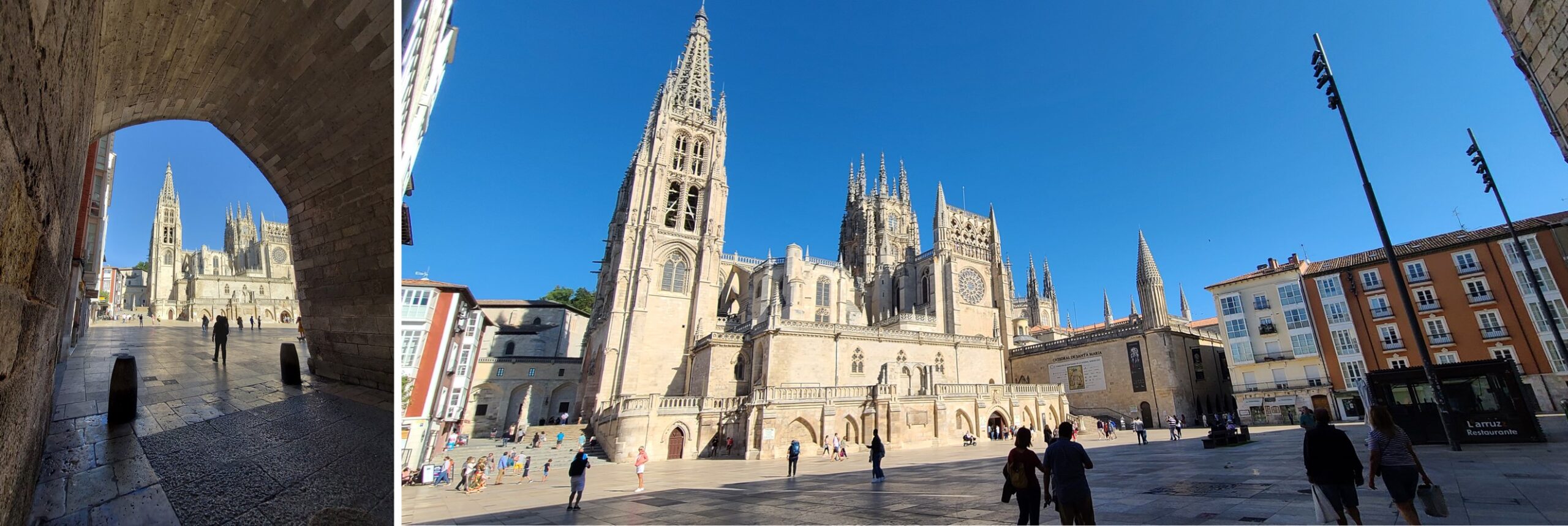
Placing Burgos in its historical context of the moment, we are talking about a royal city, modern and in constant expansion towards Europe through political alliances and the “Camino de Santiago”. As a result thereof, a new Cathedral was needed, to match the rank and importance of the city. A new one, because there was already another one, a Romanesque cathedral whose construction took place between 1080 and 1095. In scarely 39 years, the new Cathedral of Burgos was built. It was in 1260, year of the consecration of the whole temple, although, the structure continues its expansion through the eighteenth century.
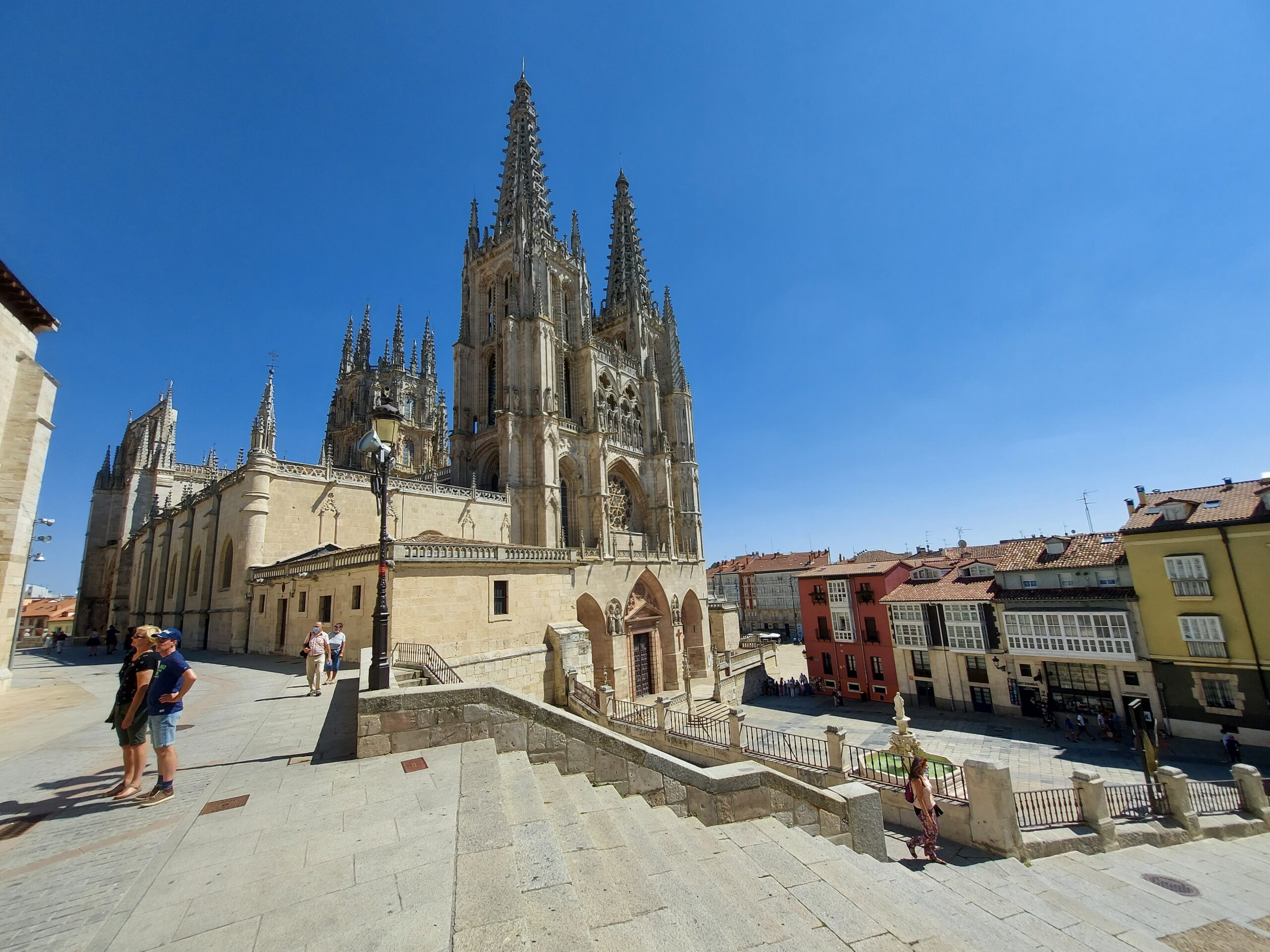
King Ferdinand and Bishop D. Mauricio placed the first stone on July 20, 1221, to raise a cathedral according to the new style spreading throughout Europe, the Gothic. Bishop D. Mauricio had studied in Paris and knew of the great French cathedrals. Architects and French masters were brought to Burgos, to follow the model of Notre-Dame, in Paris and Notre-Dame in Reims, achieving for Castilla y León the first Gothic cathedral of the Peninsula, which would serve as a model for the following constructions within the Castilian-Leonese Realm.
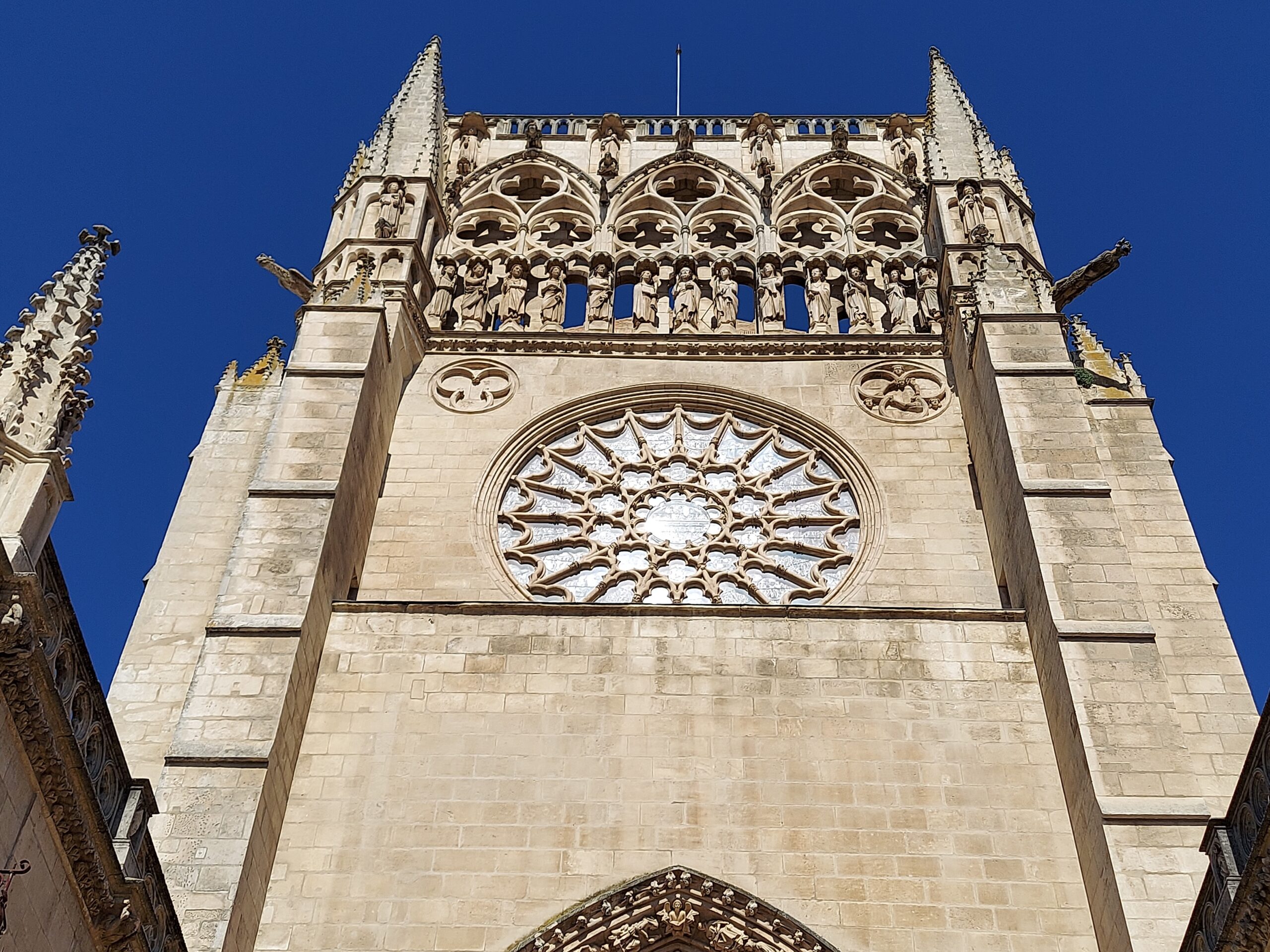
For the Cathedral of Burgos, the white stone of “Hontoria”, from the south of the Burgos Province, was chosen. It is a humble, practical, moldable rock, adapting very well to changes in temperature. Its texture, color, luminosity, solidity and durability are the characteristics that make this white stone the ideal material to be carved in this cathedral, which has allowed it to be enjoyed for nearly eight centuries. In its construction and decoration, other types of stones were used, such as alisas, marbles or jaspers, “carrara” marble. Up to the end of the 20th century, the Burgos Cathedral had a dark, opaque appearance. It was in 1997 that an exterior cleaning began which lasted fifteen years and hence showing the true color of the temple, in addition to allowing you can see all the details of its Gothic architecture.
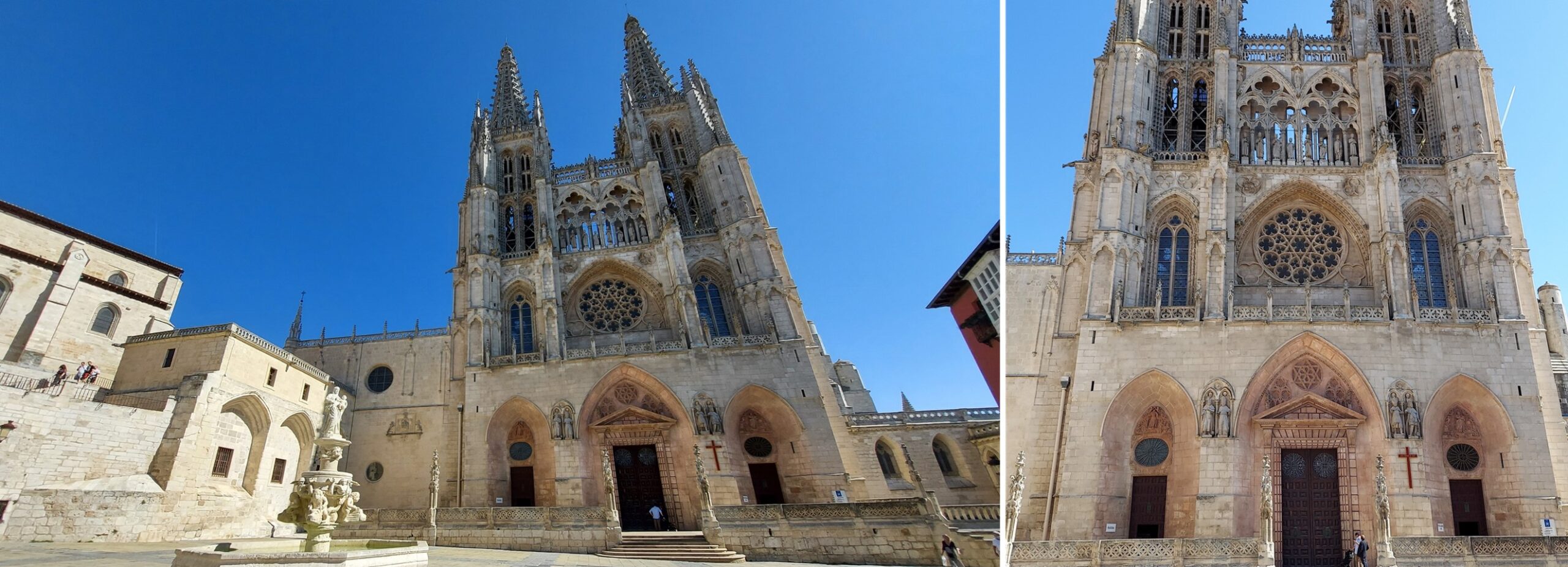
It is precisely in that facade that is located in the lower body of the thirteenth century “Portada de Santa Maria”, where one observes the three pointed arches with three doors: The Royal Door or Door to Forgiveness (center) and the side doors of the Assumption and the Immaculate. At the time, the Portada de Santa María was considered the most important sculptural manifestation of the Gothic style in Castile.
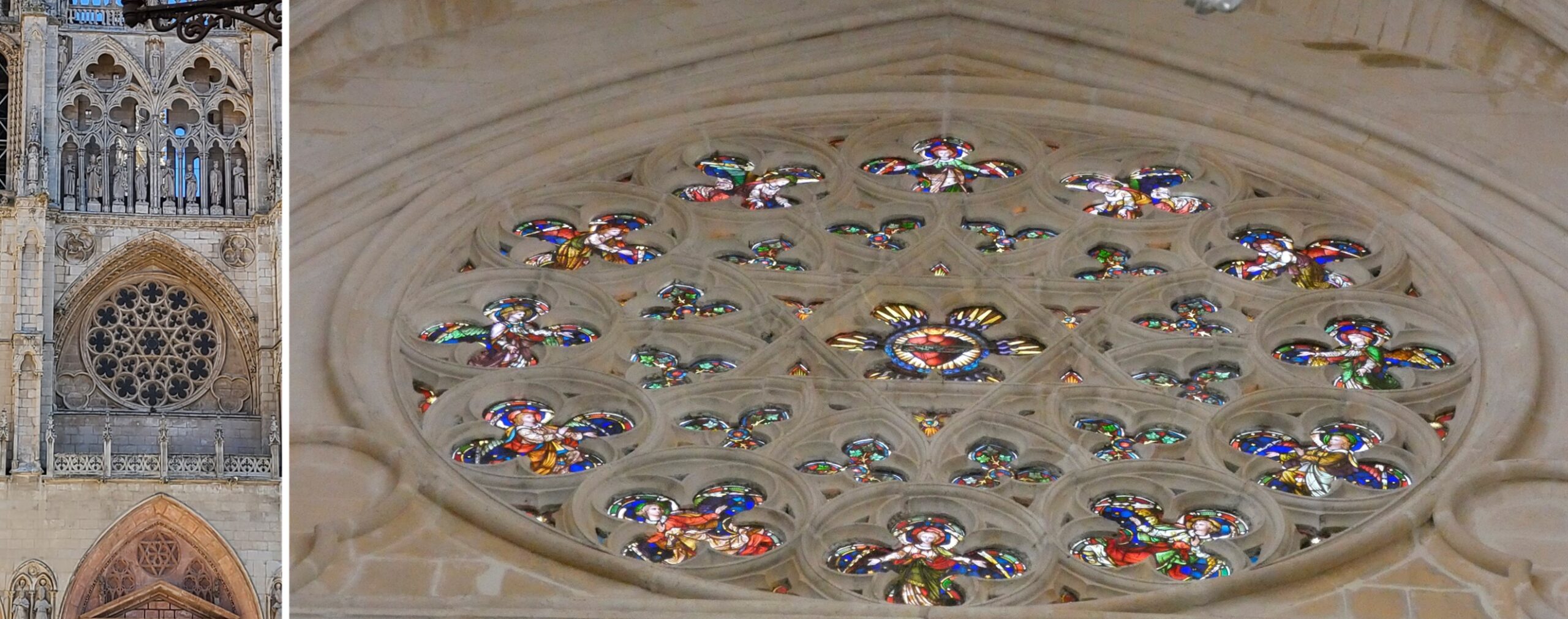
One of the elements that most attracted our attention in the second body of this façade and that should be carefully observed is the 13th century rose window, framed in a Gothic arch, which gives light to the central nave. At its center is a six-pointed star, the Star of David or Solomon’s seal, which is a messianic sign. If impressive it is from the outside, from the inside the cathedral is a beauty. In fact, it is the admiration for the rose windows of the cathedral, which has led to make it a kind of symbol of Burgos. So we saw it embodied in different items that serve as gifts or souvenirs of this great city.
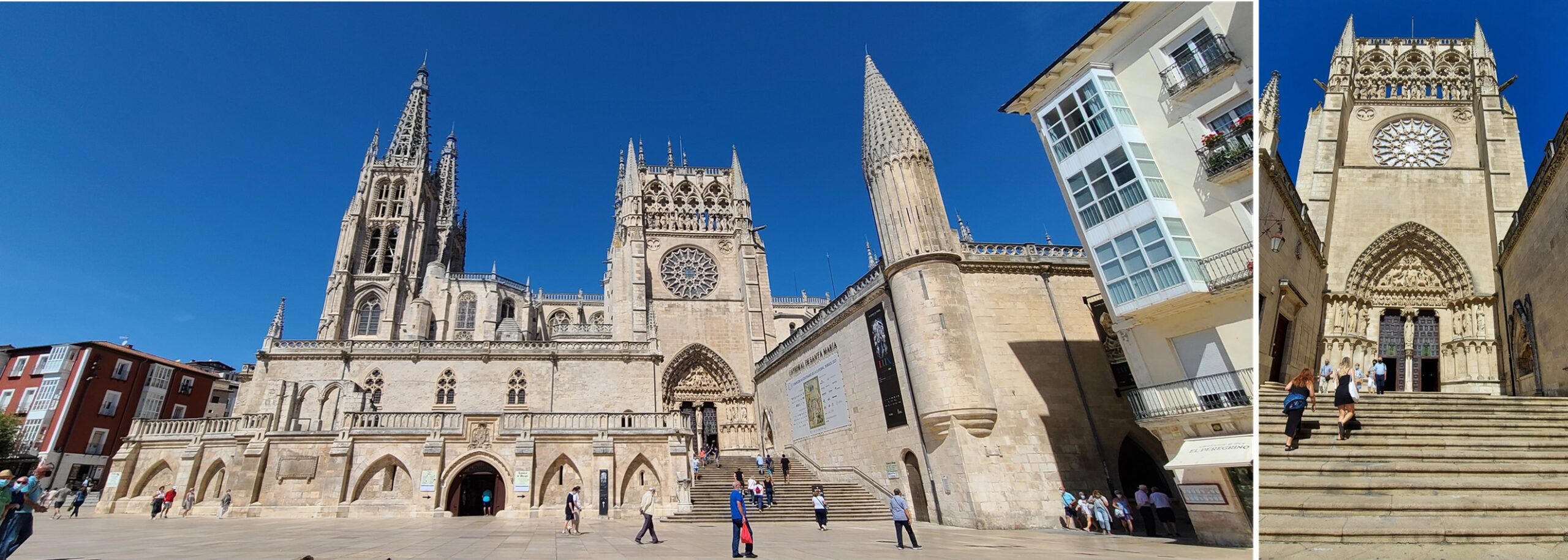
It is from the Plaza del Rey San Fernando, that you can visit the Cathedral of Burgos. You go up a large staircase to enter through the “Puerta del Sarmental”. This doorway, dedicated to the theme of Christ in his Majesty, was built approximately between 1230 and 1240 and like the “Portada de Santa Maria”, is considered one of the best sculptural ensembles of thirteenth-century Gothic classicism in Spain.
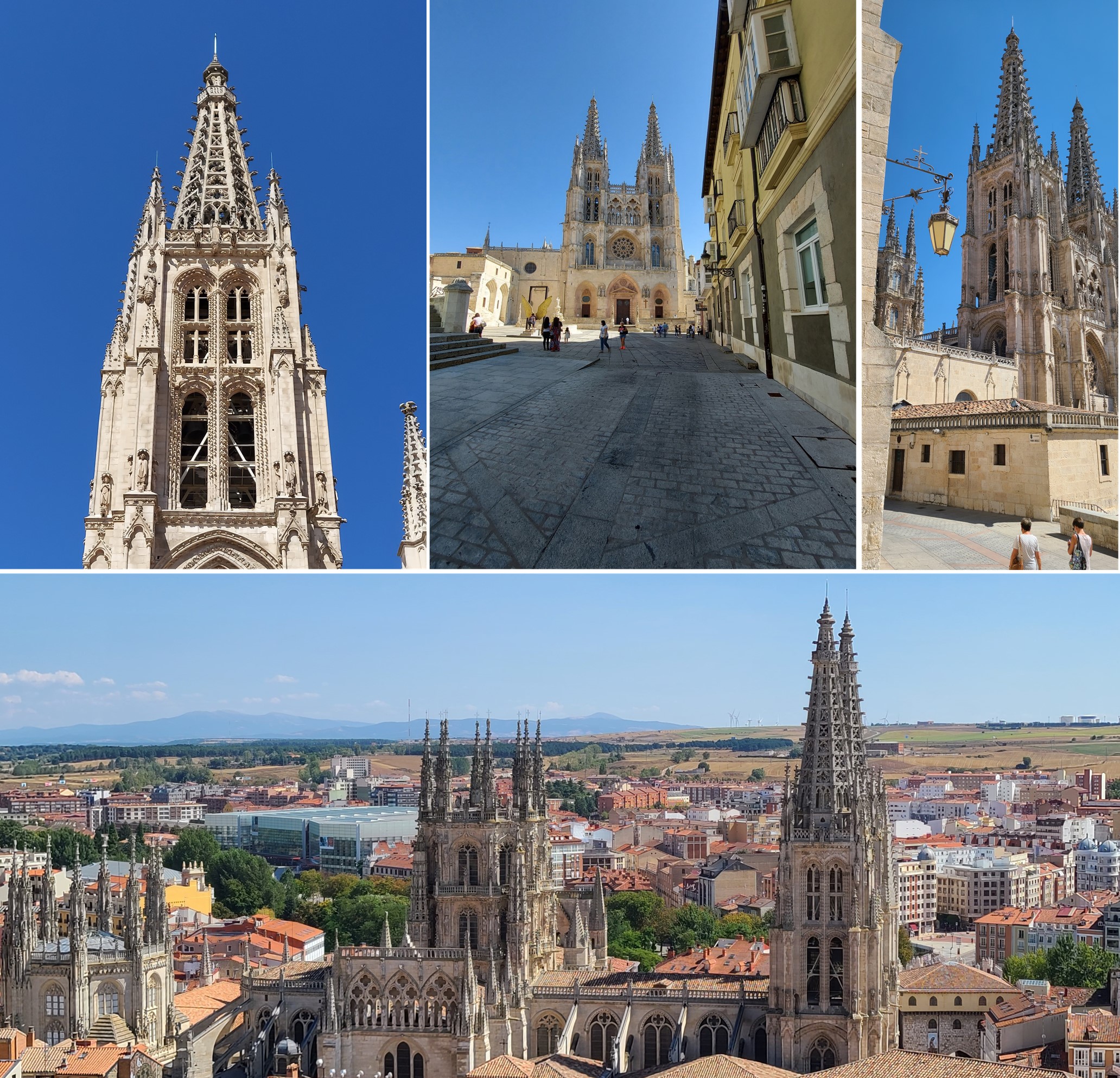
Wherever you walk around Burgos, you can’t lose sight of the almost twin towers of its Cathedral. Built in the 13th century, with three bodies and pilasters decorated with pinnacles and statues in their angles. It was by the 15th century that the German-born architect, Juan de Colonia, who introduced the flamboyant Gothic style in Castile, endowed the Burgos Cathedral with the spires that crown it. That pyramidal form of octagonal base and the very fine fretwork of the spires, complete without a doubt, the beauty of this temple.
The third doorway of the Cathedral of Burgos is the “Puerta de la Coronería” or “Puerta de los Apóstoles”, also dating to the 13th century. Although it is considered Gothic, the themes of the sculpture on display are attributed to the Romanesque tradition.
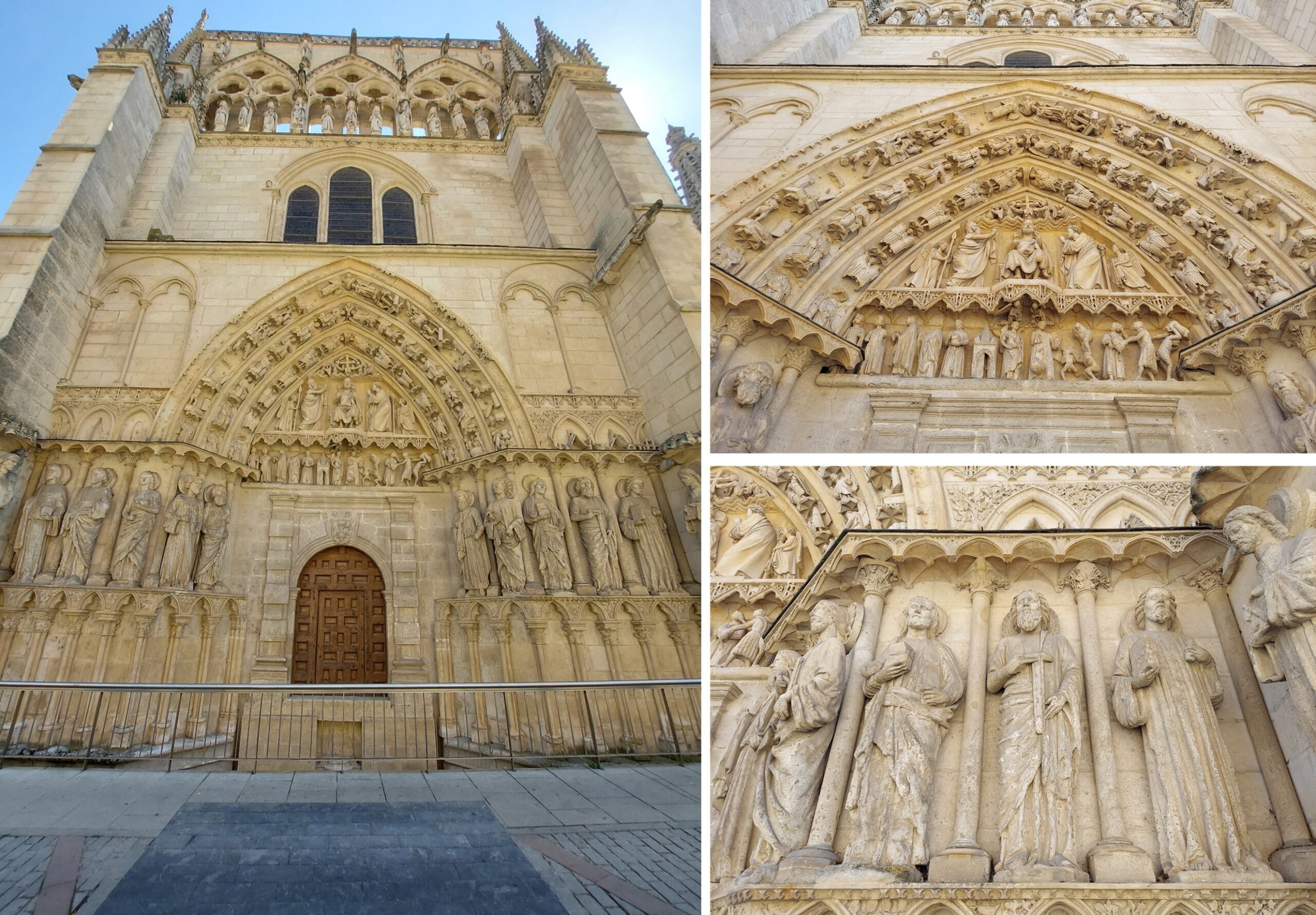
It is through the Door of the “Coronería”, which leads to the Golden Staircase of Diego de Siloé, the great Castilian architect and sculptor. This door had the particularity of allowing the people to enter through it to reach the Plaza Rey San Fernando. After a remodeling in the year 1786, the Cabildo decided to close this door due to the inconvenience caused by the excessive traffic of neighbors who descended through it to the lower part of the city carrying utensils and provisions. Thus, pilgrims following the Camino de Santiago, who used to enter the cathedral through it, were also affected by the closure of the “Puerta de la Coronería”.
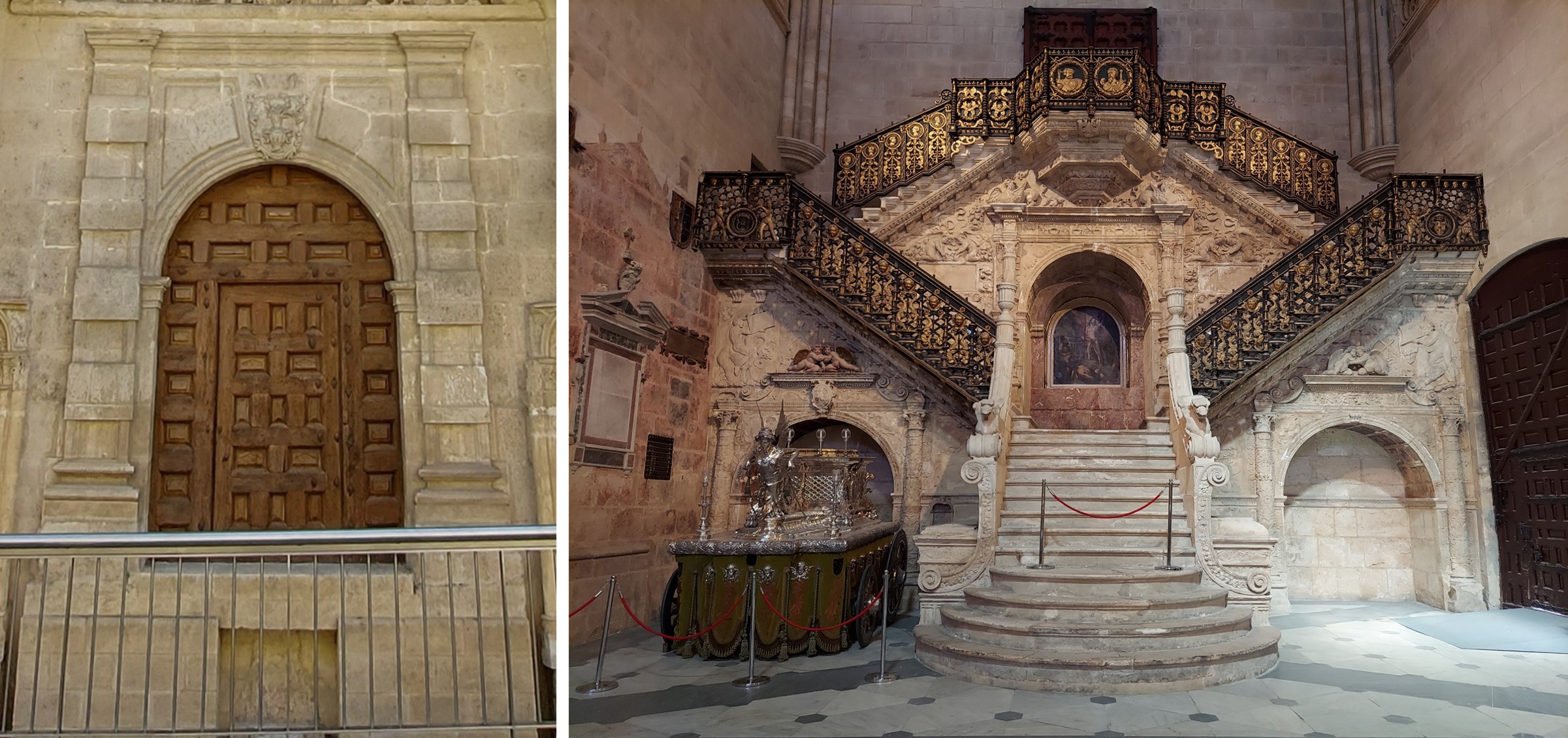
When entering the Cathedral of Burgos, the first thing that will stand out are the stained glass windows, which combine so perfectly with the white stone of the walls and that from the interior of the Cathedral of Burgos are appreciated in all its splendor. The geometric shapes, the glow and their colorfulness immediately catch the eye. In an article we published separately, we shared in-depth information also included our images of the stained glass windows.
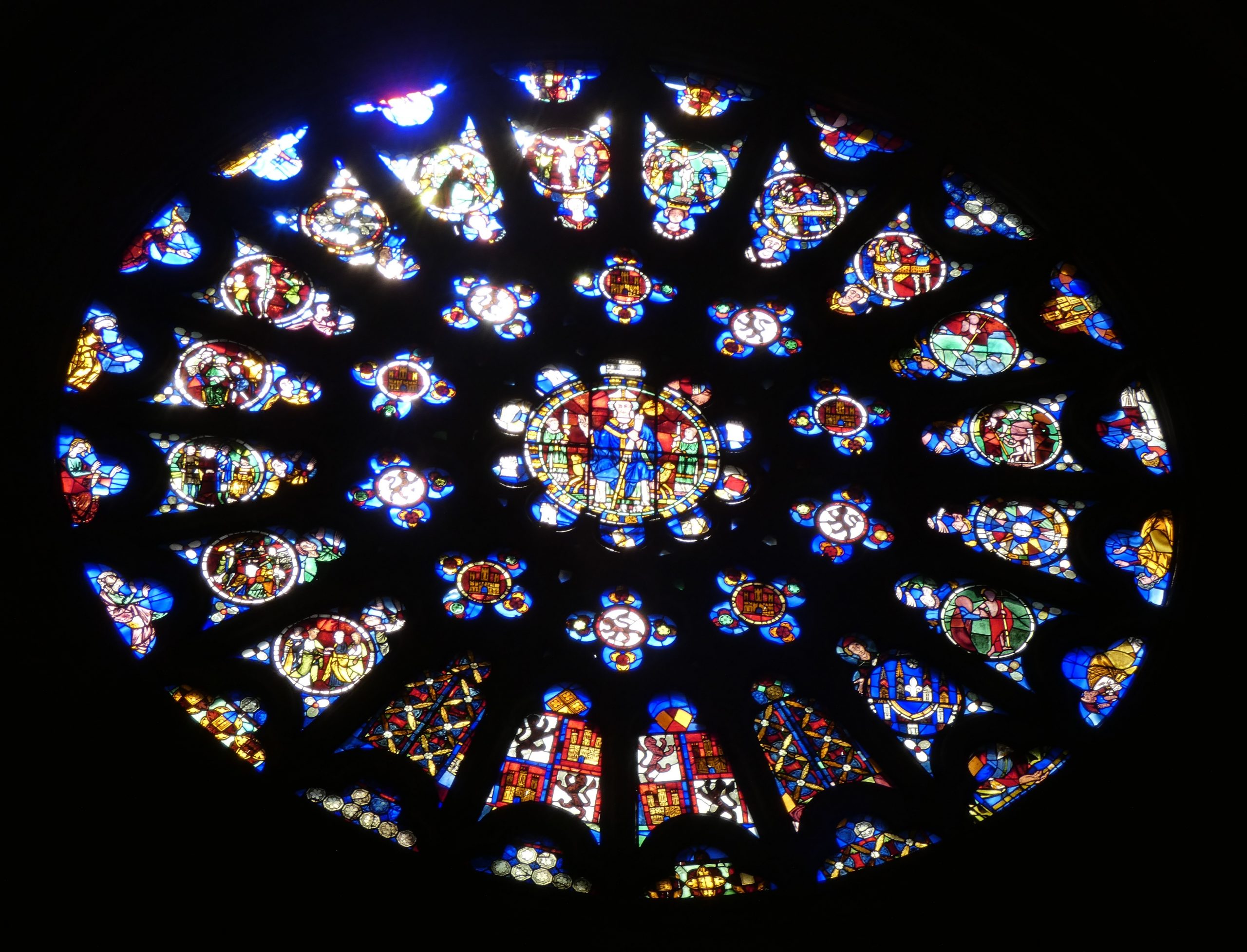
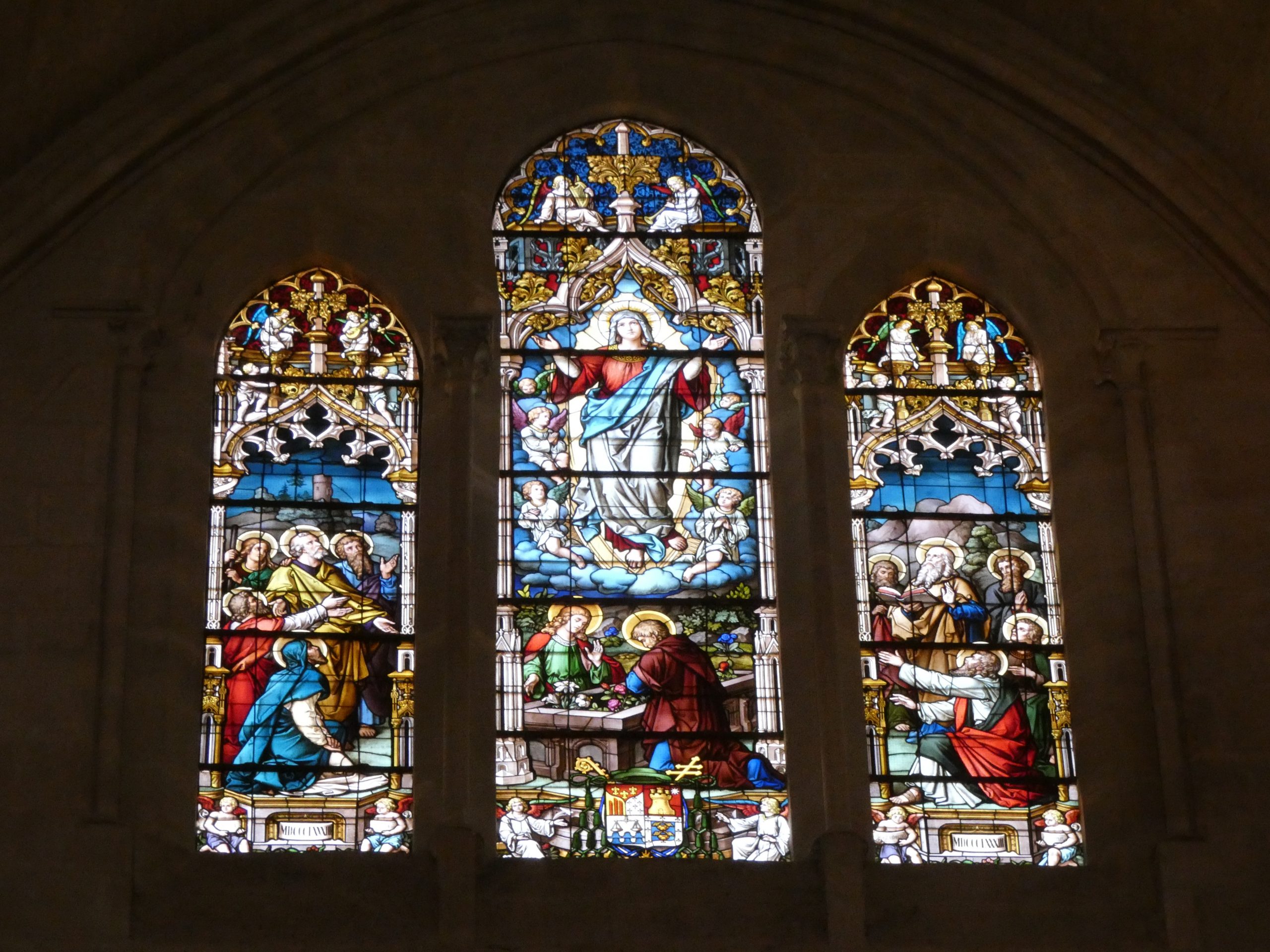
The Burgos Cathedral has a Latin cross plan, formed by its three naves, the central one being the widest. The side naves merge into the chancel by means of an ambulatory with magnificent reliefs.

When standing in the central nave, one can observe three important architectural elements that distinguish the Cathedral of Burgos:
1. The Main Chapel, which is composed of three sections with its ribbed vaults, is presided over by its main altarpiece, in the Romanesque Renaissance style. The altarpiece was begun in 1562 and completed in 1577 and it is the figure of “Santa María la Mayor” presiding over it.
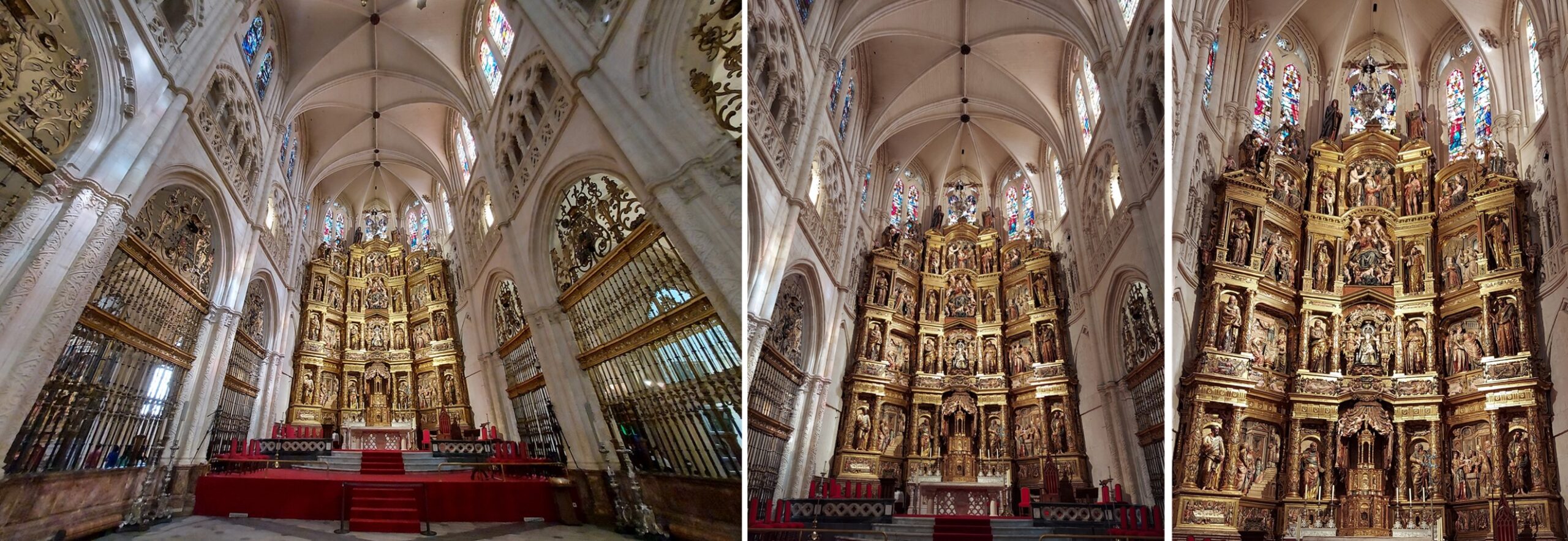
2. The Choir of the Cathedral of Burgos is a monumental sculptural ensemble in the shape of a “U”, where its walnut stalls are undoubtedly the protagonist. The religious reliefs that are found in it were carved in Plateresque style from the year 1522. It has two organs, one baroque and the other neoclassical.
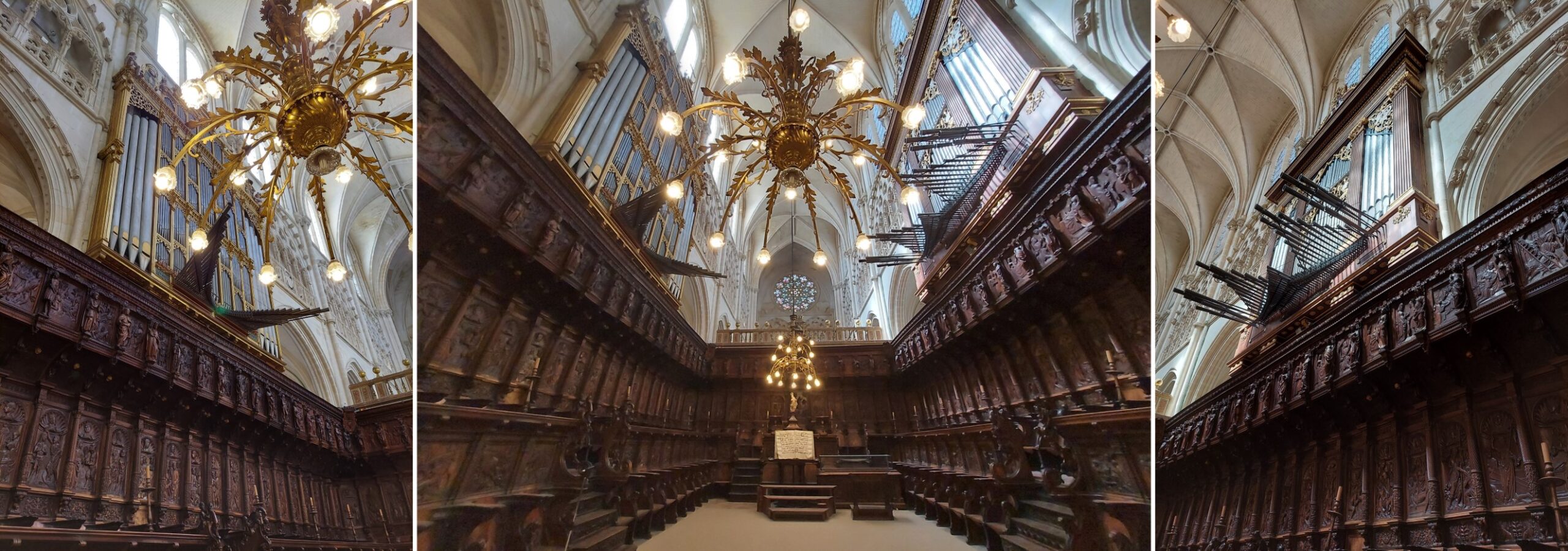
3. The “Papamoscas” and the “Martinillo”, of the XVIII century, are high above and it is a clock with a masculine figure that moves the arm to hit a bell and at the same time opens its mouth. To his right is the figure of the “Martinillo”, who is in charge of announcing the quarter hours by striking the bells that surround him.
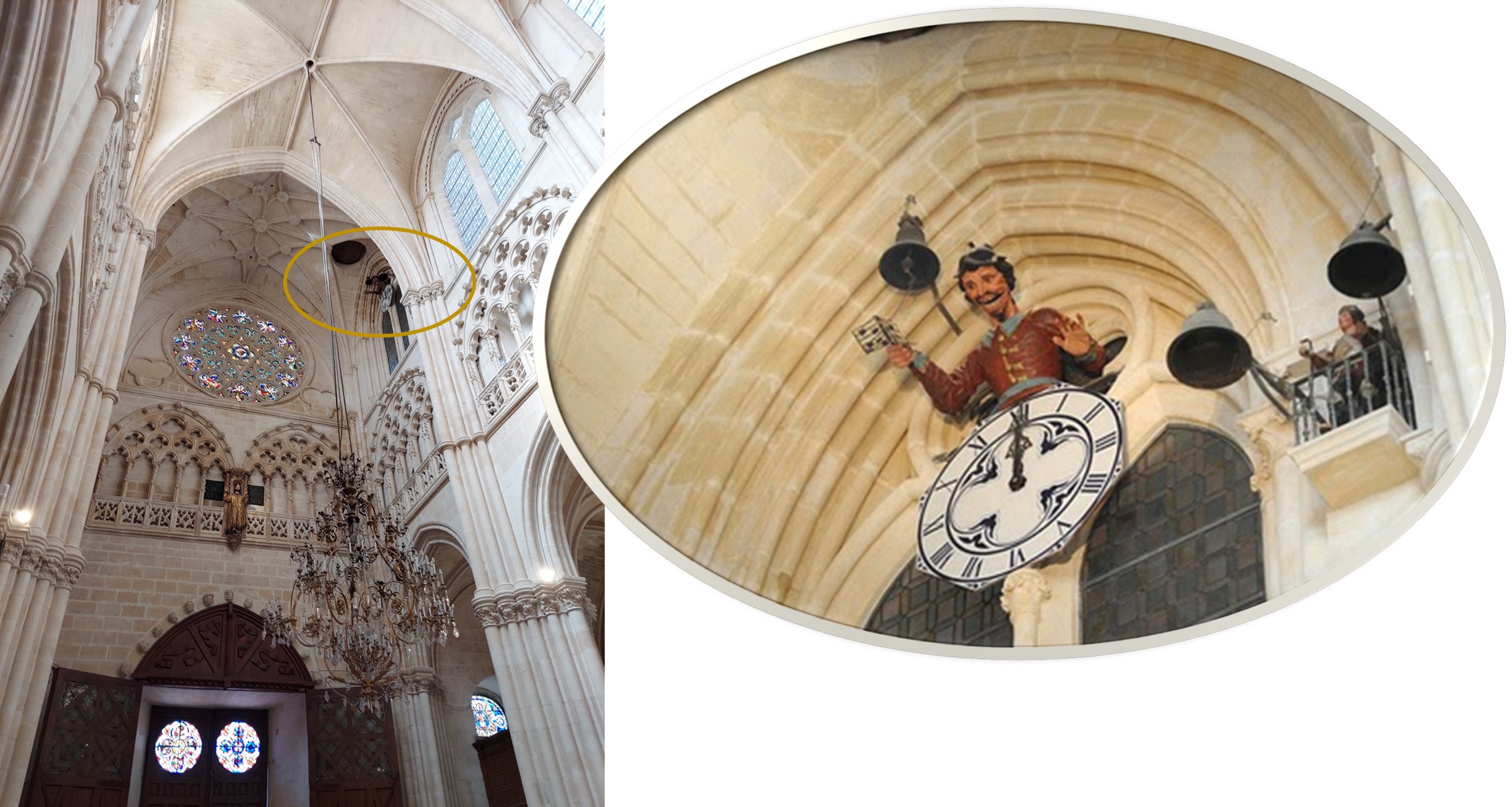
Another of the architectural elements that stands out in the Cathedral of Burgos is the “Cimborrio”. The one that we can observe today is the one that was erected starting in 1539 and culminated in 1568. The first “Cimborrio” of the cathedral was built between 1460 and 1470 and apparently could not support the large number of columns and the eight capitals that crowned it. The work collapsed when its pillars gave way on March 3, 1539.
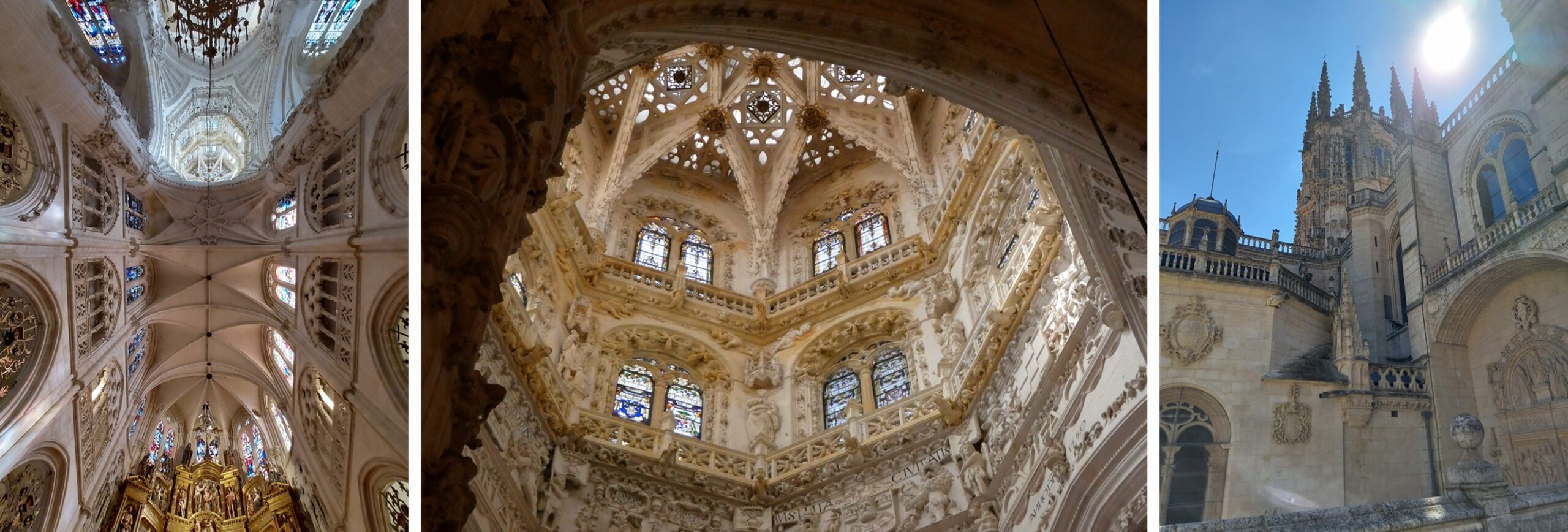
The “Cimborrio” of the Cathedral of Burgos was rebuilt by the architect and sculptor Juan de Vallejo, using one of the designs of a disciple, Juan de Langres. In the exterior you can see the elevated structure with octagonal shape, divided into two bodies and where decorative elements that beautifully combined the Plateresque and Gothic styles are combined.
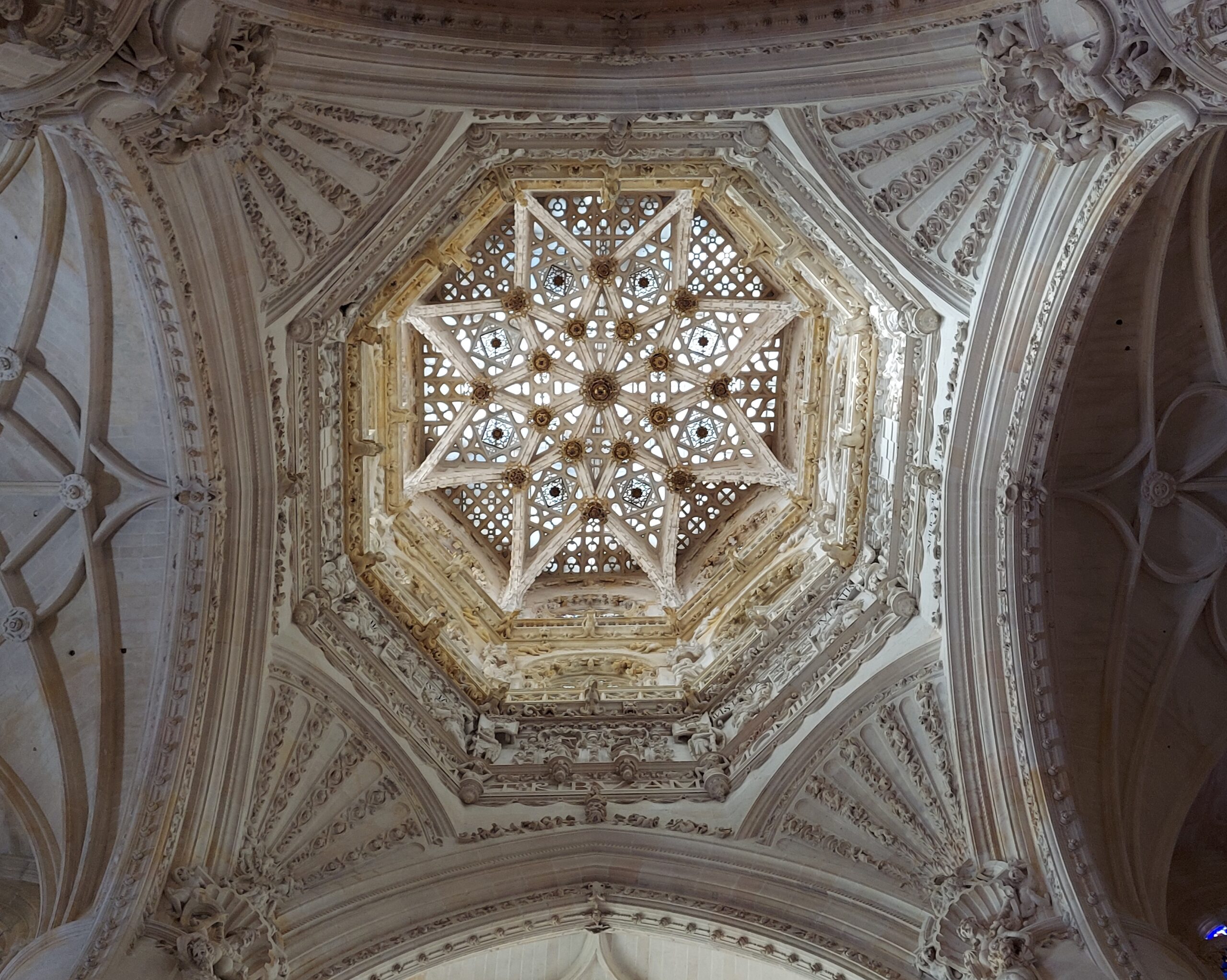
The interior of the “Cimborrio” is dazzling. What is most striking is its starry vault with a double level in the shape of an eight-pointed star and between its ribs there is a completely openwork filigree. The purpose was to lighten the weight of the structure and allow light to enter and illuminate the sculptural work. Undoubtedly, a vault that leaves you in awe.

The Cathedral of Burgos has eighteen chapels that have been added at different stages of construction. All of them are beautiful, however, it is the great Chapel of the “Condestable”, which serves as a family pantheon for the “Constables” of Castile, the one that stands out the most. It was Simón de Colonia who began the works in 1482 and it shows the transition from late Gothic to early Renaissance art. The chapel has a star-shaped, octagonal and openwork vault in its central area that allows the entrance of light. It is a dazzling chapel with extremely beautiful decorative details.
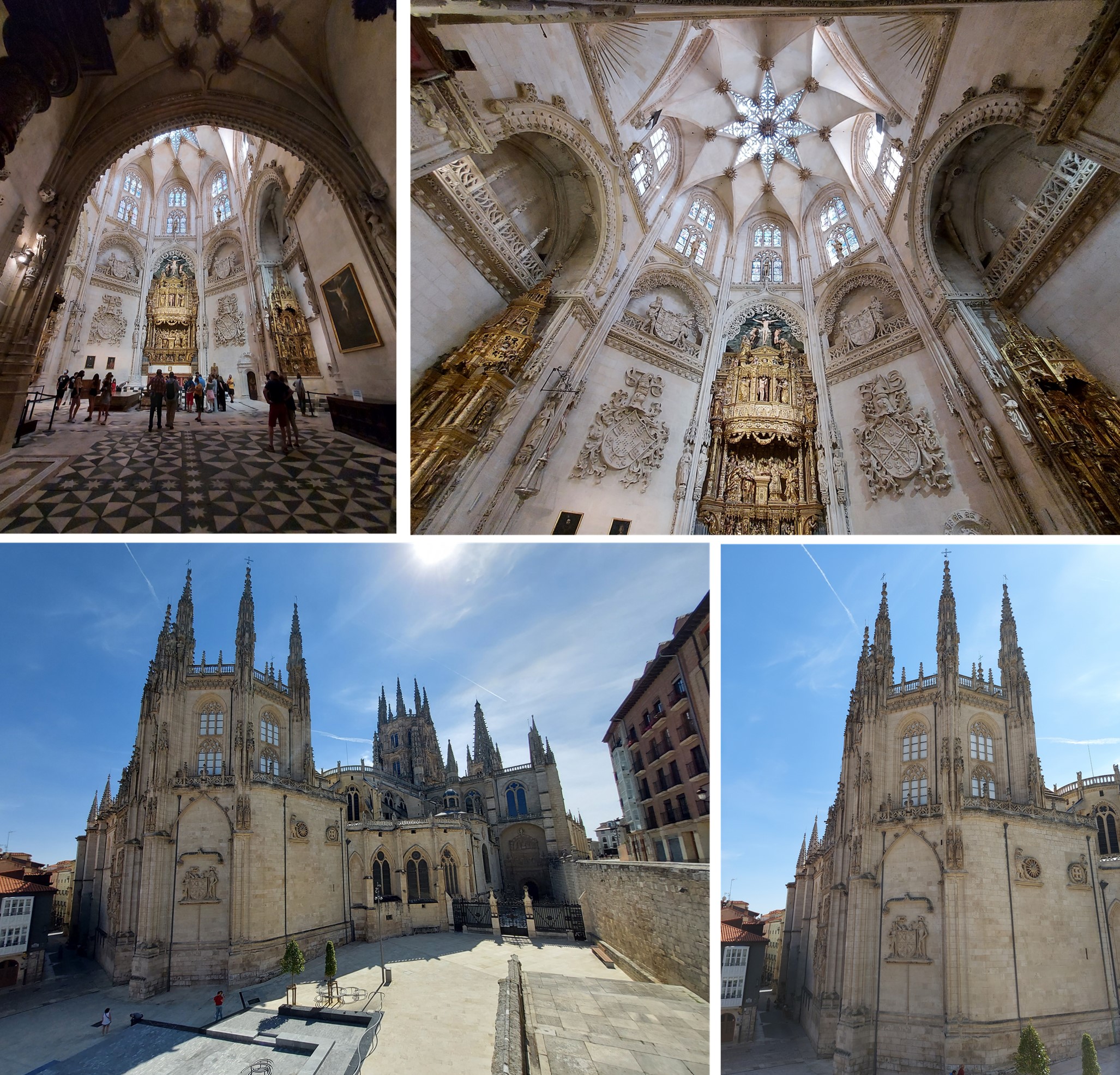
The following diagram included should provide an idea of where the chapels (“capillas”) are located throughout the Cathedral of Burgos.
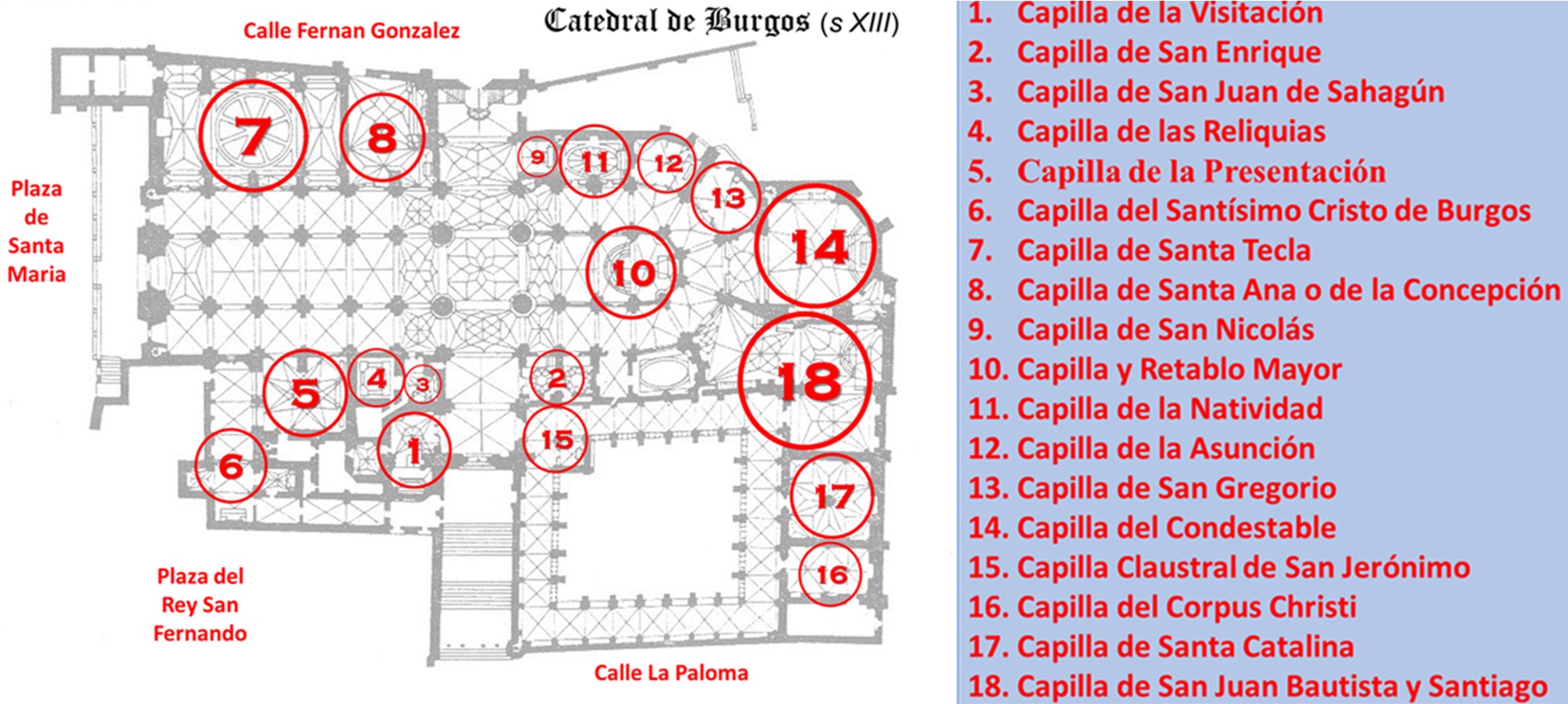
When we refer to the Cathedral of Burgos, we speak of a temple that today has a high level of technology, security, study and maintenance. It is already eight hundred years of history and the people of Burgos have given themselves the task of bringing their cathedral to high standards so that it remain beautifully for many more centuries.
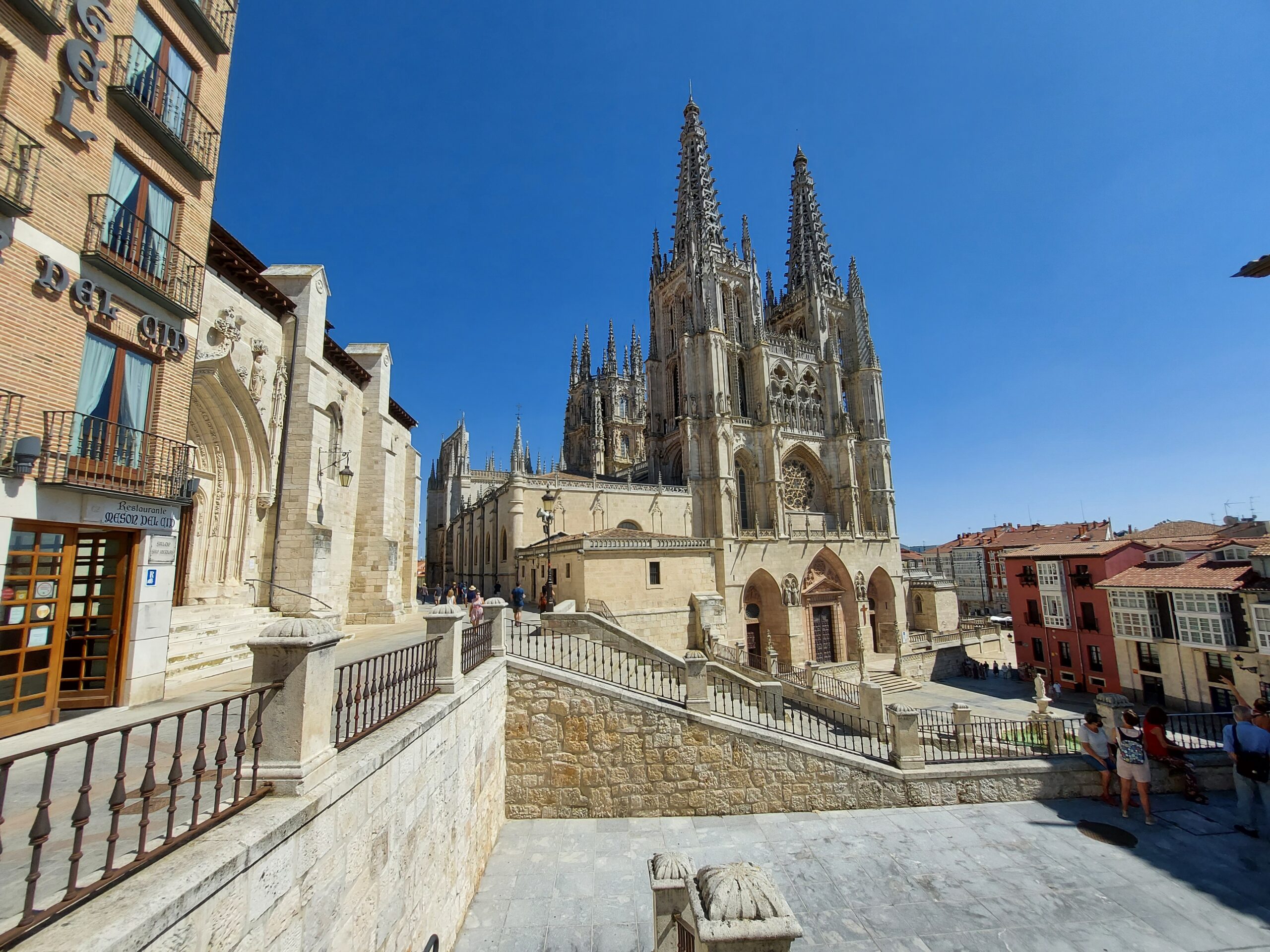
Resources:
1. catedraldeburgos.es
2. https://es.wikipedia.org/wiki/Catedral_de_Burgos

